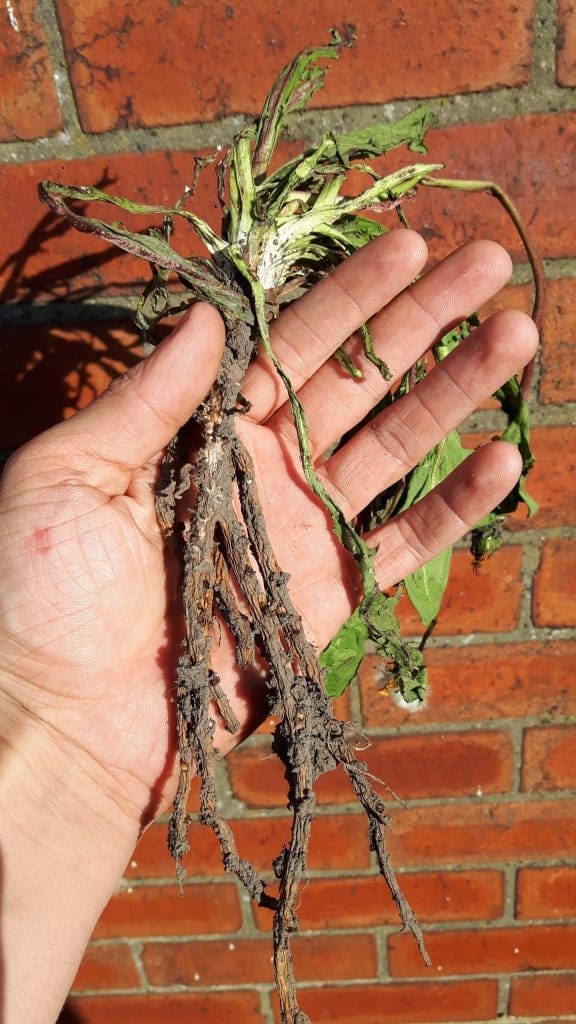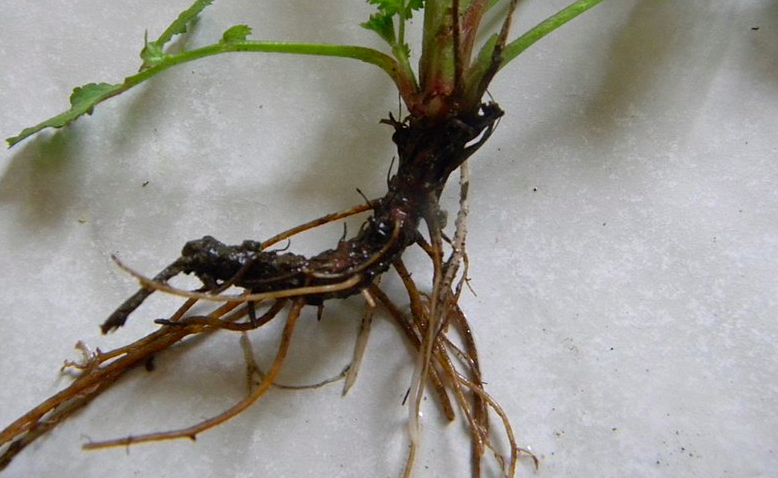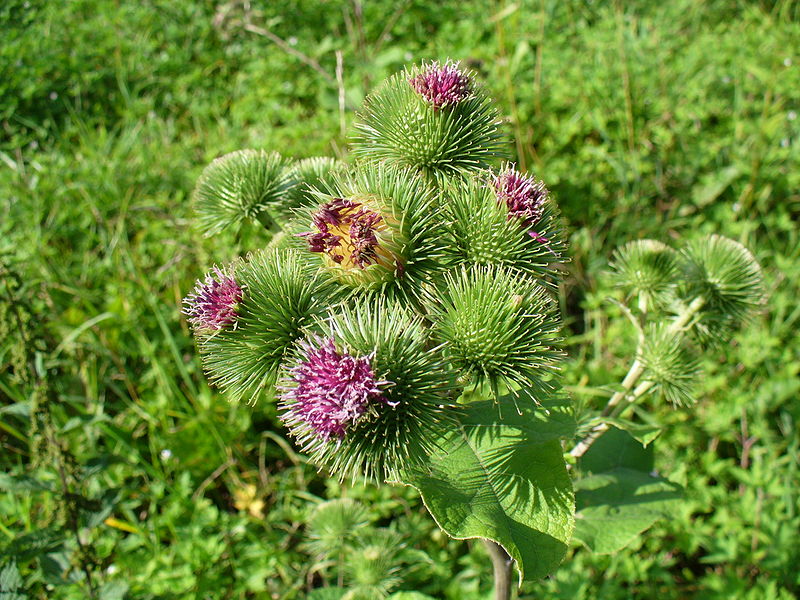While foraging can encompass a wide range of edible plants, one particularly fascinating aspect is foraging for roots. Edible tubers, in particular, are nature’s hidden treasure trove of both health and flavor.
In this article, I will delve into the world of foraging for roots, exploring the benefits, legal considerations, tools and equipment, types of plants with edible tubers, how to identify them, cooking and preparation methods, delicious recipes, sustainable foraging practices, and the health benefits of consuming these nutritious gems.
What are Edible Tubers?
Edible tubers are the underground storage organs of certain plants. They serve as a source of energy and nutrients for the plant, allowing it to survive adverse conditions such as drought or cold weather. These tubers come in various shapes, sizes, and flavors, making them a diverse and exciting addition to one’s culinary repertoire. Common examples of edible tubers include potatoes, sweet potatoes, yams, and Jerusalem artichokes, but there are countless other lesser-known varieties waiting to be discovered out in the wild!
Benefits of Foraging for Roots
Foraging for roots offers a multitude of benefits for us foragers.
Firstly, it allows for a deeper connection with nature, fostering a sense of appreciation for the abundance that surrounds us. By engaging in this ancient activity, we can gain a greater understanding of our natural surroundings and develop a more sustainable approach to our food consumption.
Furthermore, foraged roots are often more nutritious and flavorful than their cultivated counterparts. These wild tubers tend to have a higher concentration of vitamins, minerals, and antioxidants due to their natural growth patterns and diverse soil conditions. Incorporating wild roots into our diets can enhance our overall health and well-being.
On top of all this, they can be quicky pesky things to get out of the ground, if picking a lot I tend to get a serious sweat on and can definitely skip the gym that evening.
The Law Around Foraging for Roots
Before embarking on a foraging adventure, it is important to familiarise ourselves with the legal aspects surrounding this activity. While foraging for personal consumption is generally permitted in many areas, it is crucial to respect private property rights, protected lands, and any local regulations that may be in place. Some areas may require permits or have restrictions on certain species to preserve biodiversity.
Always seek permission and obtain the necessary permits when foraging on private or protected lands.
The Wildlife and Countryside Act (1981) exists to protect all wild plants. It’s important when we head out to forage, we are doing so responsibly and sustainably whilst remaining the right side of the law.
It is illegal to dig up or remove a plant from the land on which it is growing without permission from the landowner or occupier.
Perhaps not the best news, however there are ways we can seek permission and trading off your delicious home-made wares are a great way to barter with the local farmer! Foraging respectfully and sustainably should always be top of your list. Don’t be scared to chat to your neighbours if there’s some tasty roots to be found that you’ve spied over the fence. Seek permission and when collecting ensure you’re harvesting from an area where there is abundance and only taking what you need (so the plant can reproduce and provide more food for next year!).
It’s also key to try and keep the aerial parts of the plant intact. This is to ensure your I.D is 100% as identifying just the root or tuber is a tricky business.
Learn more about the Wildlife & Countryside Act
Tools and Equipment for Foraging for Roots
Foraging for roots requires minimal equipment, but a few essential tools can greatly enhance the experience.
- A sturdy pair of gloves will protect your hands from thorns, prickles, or any potential irritants.
- A small digging tool, such as a hand trowel or a hori-hori knife, will aid in gently unearthing the tubers without damaging them.
- Sometimes a pitch fork to loosen the ground around the root before digging
- Sometimes a spade if you’re going after the bigger roots like those of Burdock.
- A basket or a foraging bag is ideal for collecting and transporting your finds.
- Additionally, a field guide or a reliable foraging app can assist in identifying plants and distinguishing edible tubers from their non-edible counterparts.

What can we Actually Pick when out Foraging for Roots
The world of edible tubers is vast and diverse. While potatoes and sweet potatoes are widely known and cultivated, there are numerous other plants with delicious and nutritious tubers waiting to be discovered. The Jerusalem artichoke, also known as sunchoke, is a perennial sunflower species with knobby tubers that have a nutty and slightly sweet flavor. Cassava, a staple crop in many tropical regions, boasts starchy tubers that can be used in a variety of culinary applications. Burdock, a common weed in many parts of the world, offers slender and tasty tubers that can be cooked or pickled. These are just a few examples, and the world of edible tubers is a treasure trove out there, however lets take a closer look at our wild and foragable roots for picking.
Dandelion – Taraxacum Officinale
Often considered a weed, the humble dandelion has an amazing gnarly taproot beneath the earth which can reach around 30cm long. Notoriously difficult to dig out, it can take patience to harvest these roots but definitely worth the effort. Dandelions grow in abundance and you will probably find these in your garden – hurrah!
The best time of year to harvest the root is late September as the taproot will be at its biggest. All parts of the dandelion are very bitter which means they are great for our liver health and digestion. This is no exception for the root and it’s most commonly roasted and ground to make a surprisingly tasty coffee substitute. You can also simply roast the root as you would a parsnip – delicious.

Dandelion Root Coffee Cake Recipe
Dandelion Root Peshwari Naan Recipe
Wood Avens – Geum urbanum
There’s nothing more satisfying than a foraged spice rack. Wood avens, AKA Herb Bennet is a prolific plant that you’ll find in shaded hedgerows, woodlands, and gardens. It’s fine, twisted roots and rhizomes contain eugenol – the same compound in cloves. Break and sniff the roots and you’ll be surprised. Dry and ground them and this will be intensified and can be used in the same way as cloves.
A wonderful ingredient for broths, baking, infusions, and experiments in the kitchen you won’t have to travel far to find this inconspicuous plant.

Garlic Mustard – Alliaria petiolata
This wonderful member of the brassica family is also known as jack-by-the-hedge, which gives a clue on where you may find it. A very common hedgerow plant with spicy and garlicky notes and an impressive taproot to boot! The root is long and gnarled so will need a good scrub. People compare it to horseradish or wasabi, but I tend to find it has a more complex flavour albeit still very strong and spicy. The roots tend to become very woody after flowering so probably best to harvest in the spring/early summer time.
Burdock – Arctium lappa
The roots from burdock can be impressively long – sometimes reaching over a meter! These longer roots are far too woody to cook with unfortunately, so stick to the younger roots which can also be eaten raw. For slightly bigger tubers it’s best to cook them. Burdock is a biennial, meaning it has a 2-year growth cycle. The roots should be harvested in the autumn of the first year or spring/summer during the second year of growth before it flowers and renders the roots too tough and inedible.
They can be quite pesky to dig up so ensuring you have the landowner’s permission the easiest way is to dig a trench around the root. Burdock makes great food and medicine.
Known to be good for the liver and immune system – it’s worth grabbing that shovel as you will be rewarded with lots of tasty roots. High in starches with slow-release energy, the roots have a nutty and earthy flavour and is great simply roasted or made into stews and soups.

Burdock Root and Butternut Squash Soup Recipe
Cooking and Preparing Edible Tubers
Once you have successfully foraged a bountiful supply of edible tubers, the next step is to transform them into delicious meals. The culinary possibilities are endless. You can roast them, boil them, mash them, fry them, or incorporate them into soups, stews, and casseroles. Each tuber has its own unique flavor profile and texture, offering a delightful range of culinary experiences.
Experiment with different cooking methods and flavor combinations to truly unlock the potential of these natural treasures.
Recipes Using Foraged Edible Tubers
- Roasted Root Medley: Preheat the oven to 400°F (200°C). Chop a selection of foraged tubers, such as potatoes, Jerusalem artichokes, and burdock, into bite-sized pieces. Toss them in olive oil, sprinkle with salt, pepper, and your favorite herbs and spices. Roast for 30-40 minutes, or until the tubers are tender and golden brown.
- Sweet Potato and Cassava Fries: Peel and cut sweet potatoes, garlic mustard roots and cassava into thin strips. Toss them in a mixture of olive oil, smoked paprika, garlic powder, and salt. Spread them evenly on a baking sheet and bake at 425°F (220°C) for 25-30 minutes, flipping halfway through. Serve with your favorite dipping sauce.
Sustainable Foraging Practices
Foraging for roots should always be done in a sustainable manner to ensure the preservation and regeneration of plant populations. Here are some guidelines to follow:
- Respect the Environment when foraging for roots: Only take what you need and leave the rest for wildlife and future foragers. Avoid damaging plants or their surrounding habitats while harvesting.
- Diversify Your Finds: Do not overly rely on a single species. Harvest a variety of tubers to reduce the impact on any particular plant population.
- Replant and Regenerate: Consider replanting tubers or spreading their seeds in suitable areas to aid in the regeneration and propagation of these plants.
- Stay Informed: Stay updated on local regulations, endangered species, and conservation efforts. Support initiatives that promote sustainable foraging practices.
Health Benefits of Consuming & Foraging for Roots
In addition to their delectable flavors, edible tubers offer an array of health benefits. They are often rich in dietary fiber, promoting healthy digestion and preventing constipation. Tubers are a good source of complex carbohydrates, providing sustained energy levels throughout the day. They also contain essential vitamins and minerals, such as vitamin C, potassium, and magnesium, which contribute to overall well-being. Furthermore, the natural antioxidants found in tubers can help combat oxidative stress and reduce the risk of chronic diseases. Incorporating these nutrient-dense root vegetables into your diet can contribute to a healthier and more vibrant life.
In conclusion, foraging for roots and discovering the hidden treasures of edible tubers is a captivating and rewarding experience. From the thrill of the hunt to the satisfaction of preparing a delicious meal, foraging allows us to connect with nature, nourish our bodies, and expand our culinary horizons. By practicing sustainable foraging and respecting the environment, we can continue to unlock the health and flavor that nature has to offer. So grab your gloves, tools, and field guide, and embark on a foraging adventure that will not only tantalize your taste buds but also deepen your appreciation for the wonders of the natural world.





